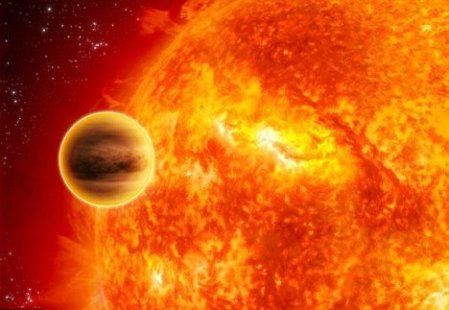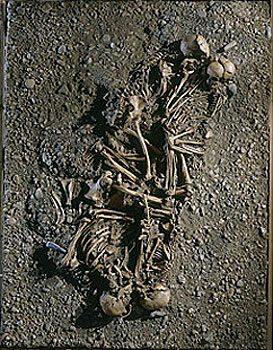The best of science in 2008
The hottest planet, the oldest dating tree with nearly ten thousand years of age and the largest black hole in the history of world astronomy, has been discovered this year. Here are the most quantitative things according to the vote of Newscast magazine.
The two spheres are perfect
In July, a group of craftsmen from many countries announced two silicon spheres believed to be the most rounded objects on the planet. Achim Leistner, an American optical engineer, explains their level of perfection: "If two spheres are as big as Earth, we will see the height difference between the lowest and the highest. "About 3 to 5 meters. This silicon spherical pair is designed to be a standard that helps scientists make the concept of kilograms more accurate. The number of atoms in each sphere is the same."
The hottest planet

WASP-12b takes only a day to turn around its star.Photo: NASA.
In October, astronomers discovered a planet called WASP-12b, about 1.5 times heavier than Jupiter and took just over a day to turn around its own star. The distance from WASP-12b to its own stars is 1/40 of the distance from the sun to the earth. According to calculations by experts, the temperature on WASP-12b is about 2,250 degrees Celsius, equivalent to 1/2 the temperature at the surface of the sun. Therefore, this is the hottest planet that humans have ever discovered, and also the planet with the shortest orbit time.
The oldest family

The nuclear family skeleton discovered in Germany consists of two adults and two children.Photo: Time.
American archaeologists found the couple's remains and their two children buried together about 4,600 years ago in Eulau, Germany. Genetic analysis showed that the two children had the woman's DNA and the Y chromosome of the man. This is the earliest family (the family form of parents and children) as soon as we know. This finding shows that even from the primitive time, people knew how to live in separate families, rather than simply living in a flock.
The oldest tree

Spruce is 9,555 years old in Sweden.Photo: Newscientist.
Over the past year, scientists have found a spruce that dates to 9,555 years in the Swedish province of Dalarna. This is a living tree with the largest life expectancy on the planet and also a living creature dating back to the Earth's champion. Previously, experts also found the roots of a vibrating aspen tree dating to 80,000 in the state of Utah, USA. But this tree is not considered a "champion" of longevity in the world of living creatures because it has died for a long time.
Light pulses have the shortest lifetime
The world's shortest light pulse takes place in just 80 billionths of a second created in June. It is short enough to be used in studying the motion of electrons around larger atoms. However, the scientists claim that they can also produce pulses of light with a fraction of a trillionth of a second.
The largest and smallest black hole in the universe

The smallest black hole in the universe is absorbing dust from a star in a star system called XTE J1650-500.X-rays emitted in this process help scientists measure the mass of black holes.Photo: NASA.
Earlier this year, experts at Finland's Tuorla astronomical station found a black hole with 18 billion times the mass of the Sun. With that mass, it becomes the largest black hole in the universe.
Meanwhile, some scientists from the US Aerospace Agency (NASA) have found the smallest black hole in the universe in a star system called XTE J1650. With 3.8 times the mass of the Sun, this black hole helps scientists have more information about the lower limit for the mass of the black hole.
The weakest stars
In the last month of the year, American astronomers discovered the faintest stars in the Milky Way. These stars, called weak stars, are nearly as bright as a millionth of the Sun's brightness.
- Brilliant moments interfere between science and painting
- Promotion of the construction of the country's first science museum
- Questacon amazing science exhibition to Danang
- Truth and misconceptions in science - Deception in science
- Women do science - difficulties forever
- Vietnamese science stands before unprecedented opportunities
- 8 mistaken 'standard' science but need to 'correct'
- Video: Explain rocket science with 1,000 common English words
- 14 strange science pictures
- Unesco calls for smart investment in science
- SCIENTIFIC SCIENTIFIC WORKSHOP FOR VIETNAM'S SCIENCE AND TECHNOLOGY DEVELOPMENT STRATEGY TILL 2020
- Announcing Vietnam Science and Technology Day 18/5
 The most famous scientific failures in history
The most famous scientific failures in history Mysterious genius mechanic and the machine froze time
Mysterious genius mechanic and the machine froze time The son carries the 'bad gene' of genius Albert Einstein
The son carries the 'bad gene' of genius Albert Einstein Isaac Newton
Isaac Newton